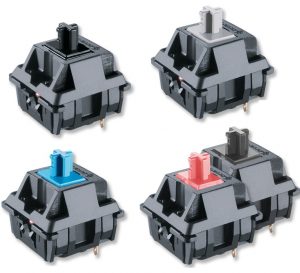Secret Advantages of Using a Membrane Switch in Industrial Applications
Secret Advantages of Using a Membrane Switch in Industrial Applications
Blog Article
Exactly How Membrane Switches Contribute to the Durability of Electronic Control Panels
Membrane switches play a vital duty in enhancing the resilience of electronic control panels, largely with their multi-layered construction which supplies reliable defense against ecological variables such as moisture and dirt. The absence of moving parts significantly reduces the likelihood of mechanical failures, making membrane layer changes perfect for requiring applications.
Definition of Membrane Layer Switches

Membrane switches are created to be thin and lightweight, making them ideal for applications where area is restricted. They can be manufactured in different shapes, sizes, and shades, supplying versatility in layout that meets aesthetic and useful needs. Additionally, membrane layer buttons can include different innovations, such as responsive comments and LED signs, enhancing user experience.
Because of their building and construction, membrane switches are typically immune to dust, dampness, and general wear, contributing to their resilience popular settings. Their smooth layout not only facilitates very easy cleaning yet additionally reduces the risk of mechanical failing, making them a recommended option for makers looking for reliable interface in their digital control board.
Protection Versus Environmental Aspects
The layout of membrane layer switches naturally offers a degree of defense versus different environmental elements, which is crucial for maintaining functionality in challenging problems - Membrane Switch. These switches are normally created with layers of flexible products that shield interior elements from moisture, dust, and pollutants. By encapsulating the wiring, membrane layer changes decrease the risk of short circuits and corrosion, which can substantially impair efficiency
Additionally, making use of durable adhesives and sealers during production improves their resistance to environmental difficulties. Membrane switches can withstand exposure to chemicals and solvents, making them ideal for sectors such as food processing and healthcare, where health and tidiness are critical. Their smooth surface layout likewise protects against the build-up of dust and germs, promoting easier cleansing and maintenance.
Temperature level fluctuations are another ecological issue, and membrane layer switches are engineered to work successfully across a vast array of temperature levels (Membrane Switch). This flexibility makes certain that control panels stay functional in various setups, from industrial atmospheres to customer electronics
Influence On Customer Communication
Customer interaction with electronic control panels is substantially influenced by the style and capability of membrane layer buttons. These switches offer a tactile interface that enhances the general customer experience, permitting user-friendly navigating and control. Their receptive nature makes sure that individuals receive prompt feedback upon activation, which is vital for tasks needing accuracy and effectiveness.
Furthermore, the smooth surface area of membrane layer switches helps with easy cleansing and upkeep, promoting customer self-confidence in the integrity of the interface. This tidiness is specifically important in environments where health is paramount, such as medical or food processing settings. In addition, the small and light-weight design of membrane switches adds to the aesthetic appeal of control board, motivating individual engagement with a modern-day and streamlined look.
Moreover, the combination of aesthetic components, such as published icons and backlighting, helps individuals quickly recognize features, reducing the finding out contour connected with brand-new tools. Because of this, individuals can run gadgets better, bring about boosted productivity and complete satisfaction. In summary, membrane buttons play a pivotal function in enhancing user interaction by integrating performance, looks, Find Out More and convenience of usage, ultimately leading to boosted functional effectiveness.
Design Flexibility and Personalization
Style adaptability and customization are necessary elements of membrane layer switches, enabling makers to customize digital control panels to details applications and individual demands. This adaptability allows for the combination these details of different style elements, such as colors, graphics, and appearances, which can enhance the aesthetic charm and customer engagement of the control panel.
Membrane switches can be personalized in shapes and size, suiting a large range of tools and applications, from industrial equipment to customer electronics. This versatility guarantees that manufacturers can create intuitive user interfaces that align with individual assumptions and operational requirements. Furthermore, the capacity to include one-of-a-kind features such as backlighting or tactile comments better boosts usability, allowing for an extra interactive experience.
Additionally, the production process for membrane switches sustains the fast prototyping of styles, enabling suppliers to repeat and fine-tune their principles rapidly. This ability not just accelerates the advancement timeline yet additionally guarantees that the end product meets details functional and aesthetic requirements.

Cost-Effectiveness and Durability
Cost-effectiveness and longevity are substantial benefits of membrane switches, making them an eye-catching option for makers and end-users alike. These buttons are typically cheaper to generate than typical mechanical switches, mainly because of their streamlined manufacturing procedures and the decreased variety of components needed. This cost benefit prolongs not only to first production however also to lasting functional description expenditures, as membrane layer buttons typically call for less maintenance and have a reduced failing rate.
Moreover, the durability of membrane layer changes adds to their total worth. Constructed from durable materials, they are resistant to ecological aspects such as moisture, dirt, and chemicals, which can bring about early wear in various other switch types. The lack of moving parts reduces mechanical failing, permitting membrane layer switches over to preserve capability over expanded periods.
This resilience is specifically helpful in applications calling for regular efficiency under requiring problems, such as medical devices and commercial devices. Inevitably, the mix of cost-effectiveness and longevity makes membrane layer changes a financially viable choice for makers, giving dependable services that stand up to the examination of time while optimizing budgetary factors to consider.
Final Thought
In final thought, membrane buttons significantly improve the longevity of digital control panels through their robust building and safety attributes - Membrane Switch. On the whole, membrane layer switches stand for a trustworthy and affordable option for improving the longevity and capability of electronic control systems.
Report this page